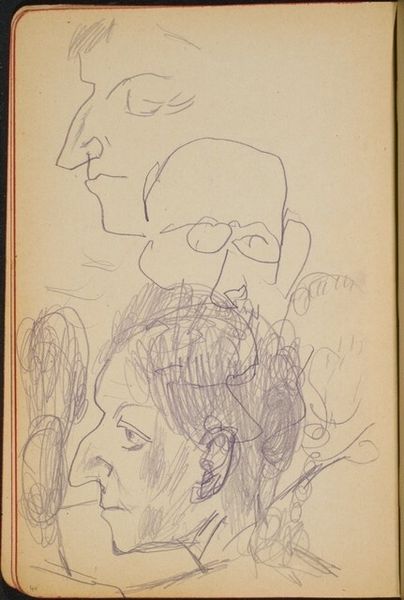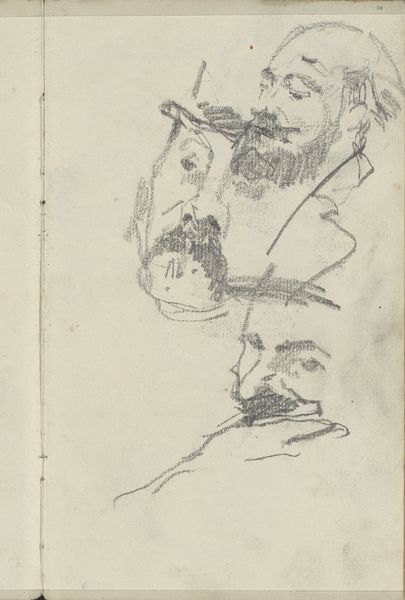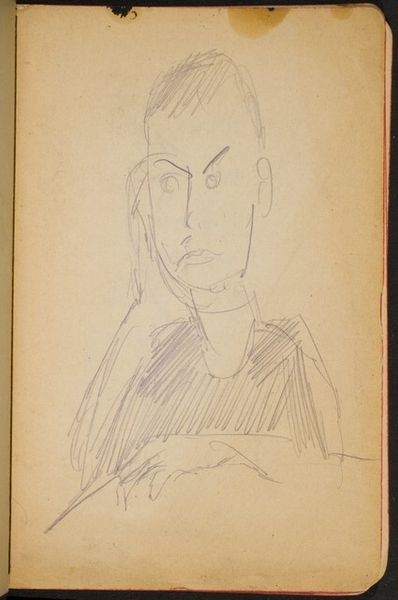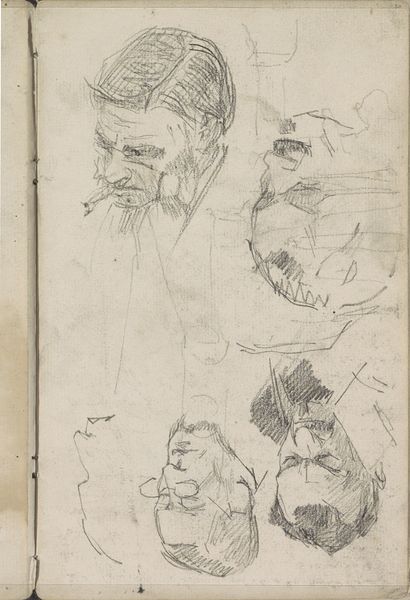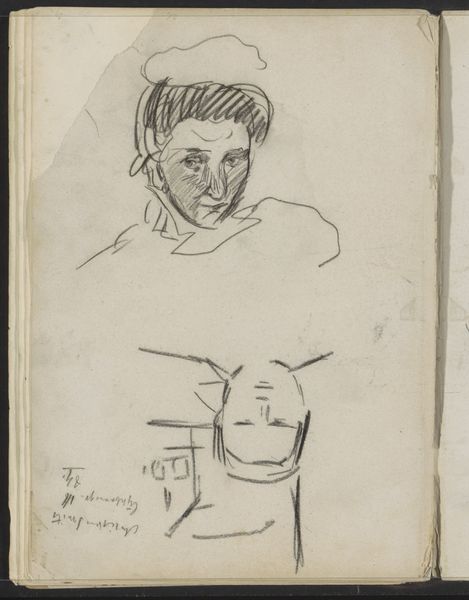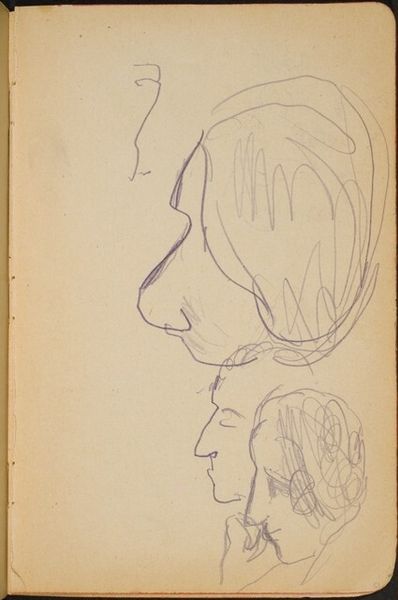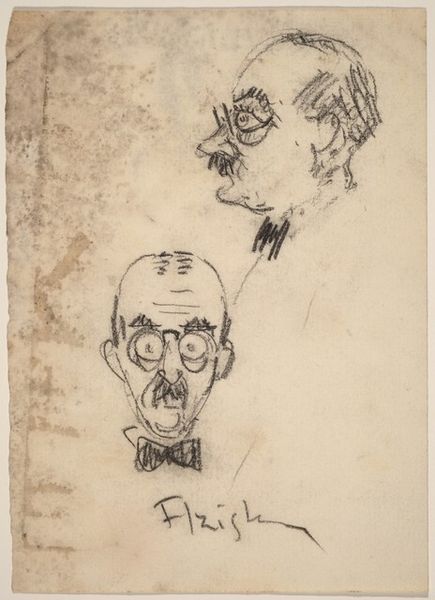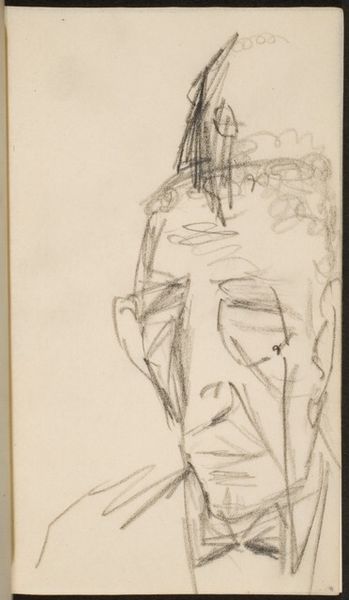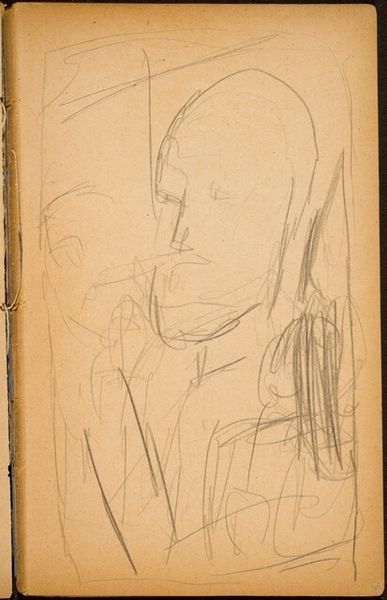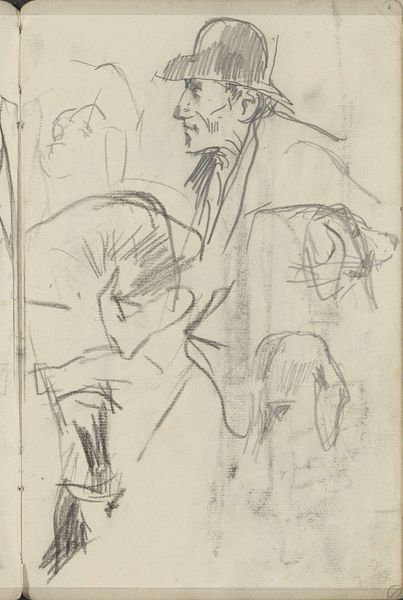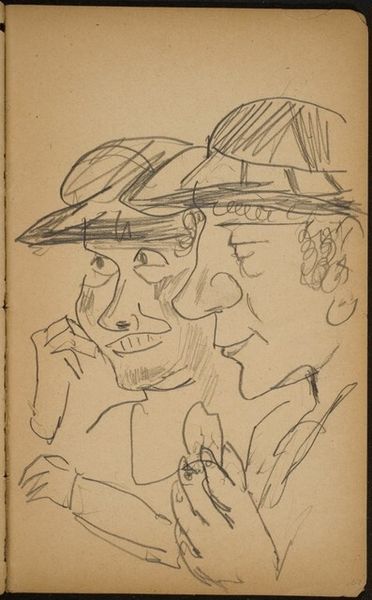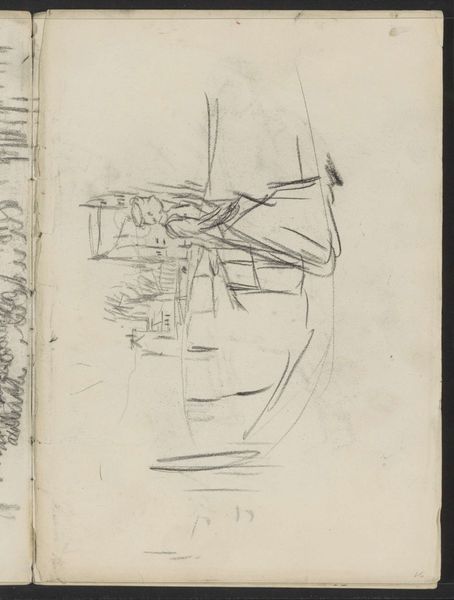![drei Köpfe und Beschriftung (Three Heads, One Notation) [p. 11] by Max Beckmann](/_next/image?url=https%3A%2F%2Fd2w8kbdekdi1gv.cloudfront.net%2FeyJidWNrZXQiOiAiYXJ0ZXJhLWltYWdlcy1idWNrZXQiLCAia2V5IjogImFydHdvcmtzL2FiNWU2Y2MxLTQ5ZjUtNGViYi1hOGJhLTdhZDA3MzY5Mjk1Ny9hYjVlNmNjMS00OWY1LTRlYmItYThiYS03YWQwNzM2OTI5NTdfZnVsbC5qcGciLCAiZWRpdHMiOiB7InJlc2l6ZSI6IHsid2lkdGgiOiAxOTIwLCAiaGVpZ2h0IjogMTkyMCwgImZpdCI6ICJpbnNpZGUifX19&w=1080&q=75)
drei Köpfe und Beschriftung (Three Heads, One Notation) [p. 11]
0:00
0:00
drawing, paper, ink
#
portrait
#
drawing
#
paper
#
personal sketchbook
#
ink
#
ink drawing experimentation
#
expressionism
#
line
#
portrait drawing
Dimensions: sheet: 19 x 12.5 cm (7 1/2 x 4 15/16 in.)
Copyright: National Gallery of Art: CC0 1.0
Editor: Here we have Max Beckmann's ink drawing, "drei Köpfe und Beschriftung (Three Heads, One Notation) [p. 11]". It feels like a glimpse into the artist's private world, like a quick sketch from a personal sketchbook. What do you see in this piece, something perhaps beyond its raw, unfinished quality? Curator: It's a fascinating look into the artist’s process, isn't it? Beckmann was working within the tumultuous interwar period in Germany, witnessing societal upheaval and grappling with the rise of extremism. The fragmented nature of these portraits, almost like deconstructed faces, speaks to a sense of disorientation and the breakdown of traditional societal structures. Editor: The faces do seem quite stark, almost grotesque. Do you think that's intentional? Curator: Absolutely. Expressionism, which Beckmann was a key figure of, often employed distortion and exaggeration to convey powerful emotions. In this drawing, the disjunctive elements of each face may reflect an attempt to unveil the inner psychological states of his subjects. Editor: So, it's not just about how they look, but what they represent? Curator: Precisely. Consider the implications of 'notation' in the title - what does it mean to capture a person through not only image, but inscription? What commentary can be derived when reflecting on legibility and historical erasure within society? Beckmann's portraits challenged conventional representations, pushing the boundaries of identity and exploring the anxieties of his time. Editor: It's amazing how a simple sketch can hold so much complexity! I will certainly need to learn more about the interwar context of the artist, thank you. Curator: Indeed. Art often functions as a mirror, reflecting not just the artist’s inner world, but also the social and political realities that shape their perspective.
Comments
No comments
Be the first to comment and join the conversation on the ultimate creative platform.
